Fifty-year-old Rano Nuhrio, a primary school teacher is also hair-dresser for camels in Thar. Intrigued? Read on.
Using different types of shears and scissors, Nuhrio like any passionate artist, works with deep concentration. People gather around him to stand or even sit and watch as he transforms camel fur into patterns, motifs and designs on the animal’s body. The designs are intricate, and the labour time-consuming.
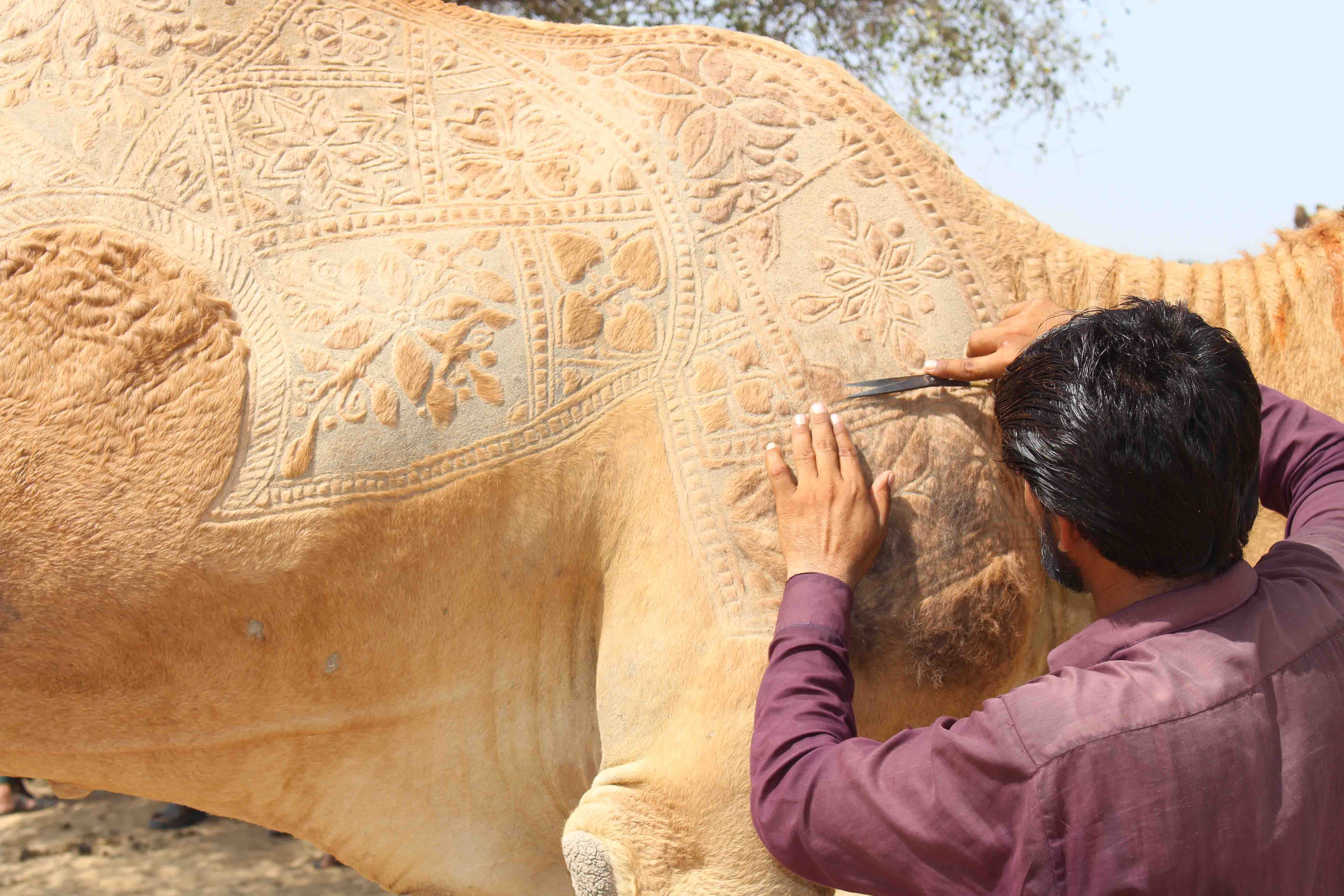
The artist
Working on countless camels for consistency for thirty years has affected his eyesight due to strain on his eyes. But it didn’t stop him, because now he works wearing prescription glasses.
Nuhrio is a resident of village Panj Pura, 15km away from Mithi that lies in the north of his village. Mithi is the central city of Thar Desert and the headquarters of district Tharparkar Sindh.
Drawing remains his childhood passion. As a primary school student in Kaloi town, he loves making pencil and pen sketches in his notebook. His Brohi teacher in school would tweaked his drawings and groom him in art. After school, Nuhrio would draw on the white sand with his fingers.
“I can easily reproduce any design on a camel’s body,” he says. “But first I try to visualise what kind of design will look beautiful on the camel’s fur and then I start working on it.”
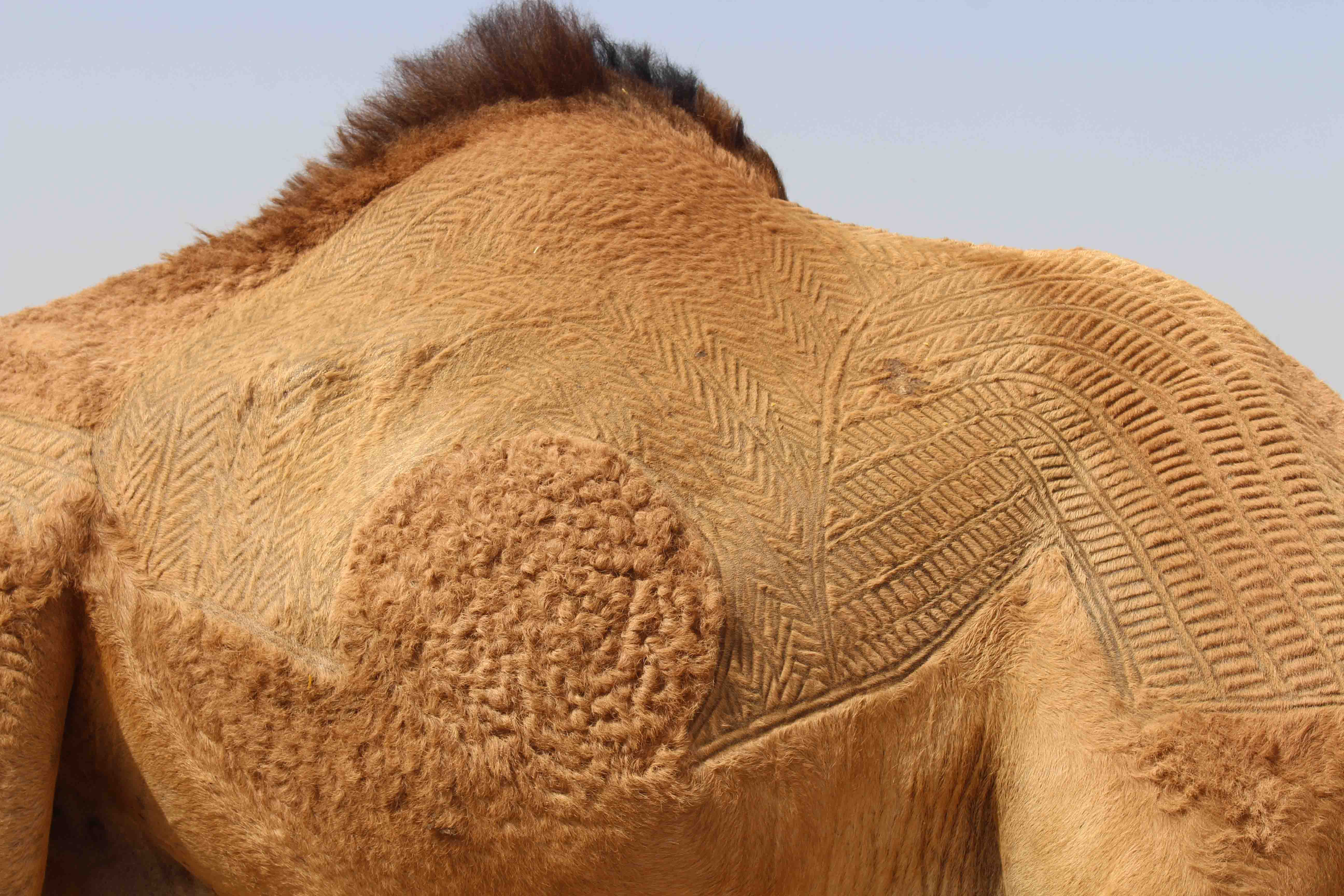
As he adorns the camel’s body with unique drawings of flowers, animals, birds, the camel owners applaud him for his deft work. Using his scissors at different angles, he works through the fur on different body parts such as the legs, knees, cheeks, neck, and chest. He enhances the clever cutting and shearing by use of black hair colour and henna.
Nuhrio’s student Gul Mohammad is also a relative and lives in the same village.
“My ustad was my class teacher in school,” shares Gul Mohammad. “I remember that after school, he was seen outside the school courtyard working on camel fur. Even at that time, the villagers would stand or sit around him watching him create patterns. People showed a lot of interest in his work, and admired and encouraged him.
Nuhrio often asked Gul to help in his work and this way Gul found an opportunity to learn the artistic skill. “As my ustad worked, I would watch him and gradually began to learn. Now after three years, we work together and I can make the same designs as him, but his work touches perfection,” says Gul with admiration in his eyes.
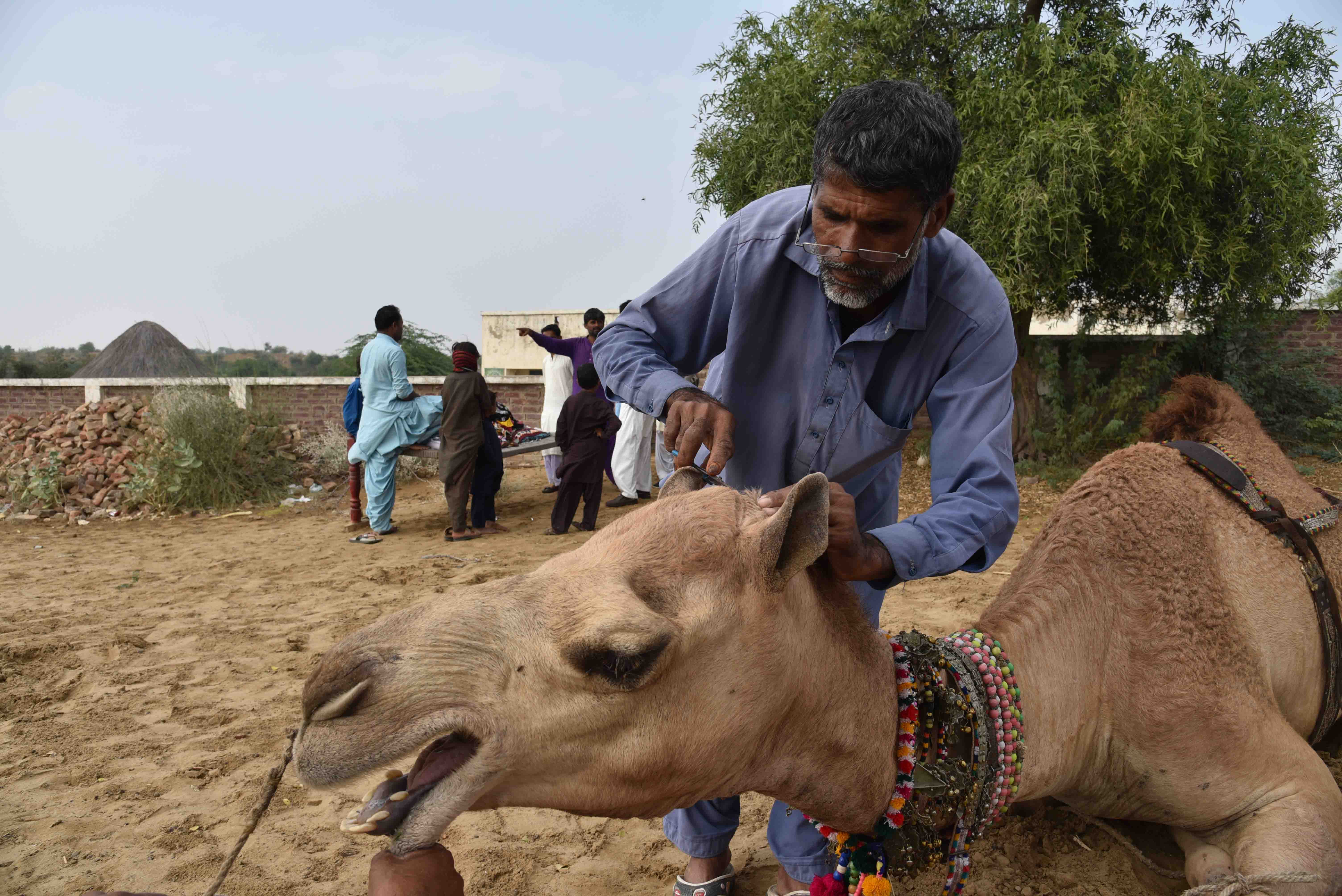
The best time to work
March and April are the ideal and favourable months for fur-cutting and making designs on camel’s bodies.
The reason for this is that designs made during this time period remain intact for three or four months on the camel’s body as these months, fur growth is slow. But if the patterns are made after or before these months, the designs remain for not more than twenty days or a month and slowly wear out, as May onwards, camels shed fur, so it thins out for summer.
Before March, the camel fur growth is fast so again the designs would be affected. Therefore, before March and after April, design work is avoided.
But some camel owners and traders still want their camels adorned with patterns and motifs even before March and after June because they wish to take their camels to different festivals and social events in the area. Shrine festivals are the biggest market for camel traders.
With designs on the camel’s body, the camel looks very beautiful, and this beauty increases the price of the animal. For this reason, design on the camel’s fur is an investment prior to selling the camel, in the same way that people spruce up their cars before selling them.
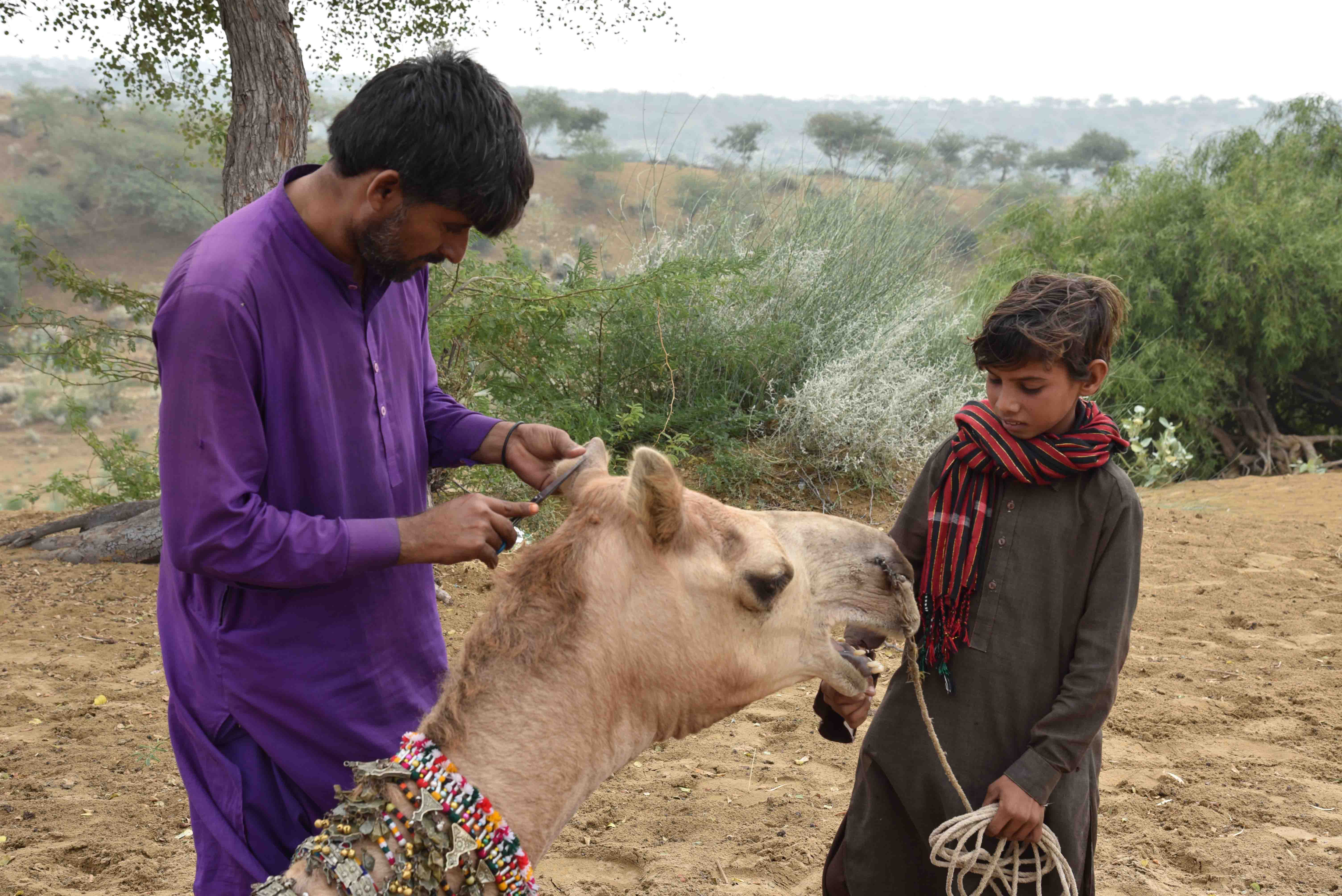
The medium
Camel fur is of two main types; it could be soft or coarse. Soft fur is ideal for making designs but a camel whose fur is tough and coarse, it is difficult to cut through it to make patterns. For this kind of camel fur, designers are reluctant and on the insistence of the camel owner, may only agree to make one or two motifs that would take two or three hours, and not intricate designs that would take days.
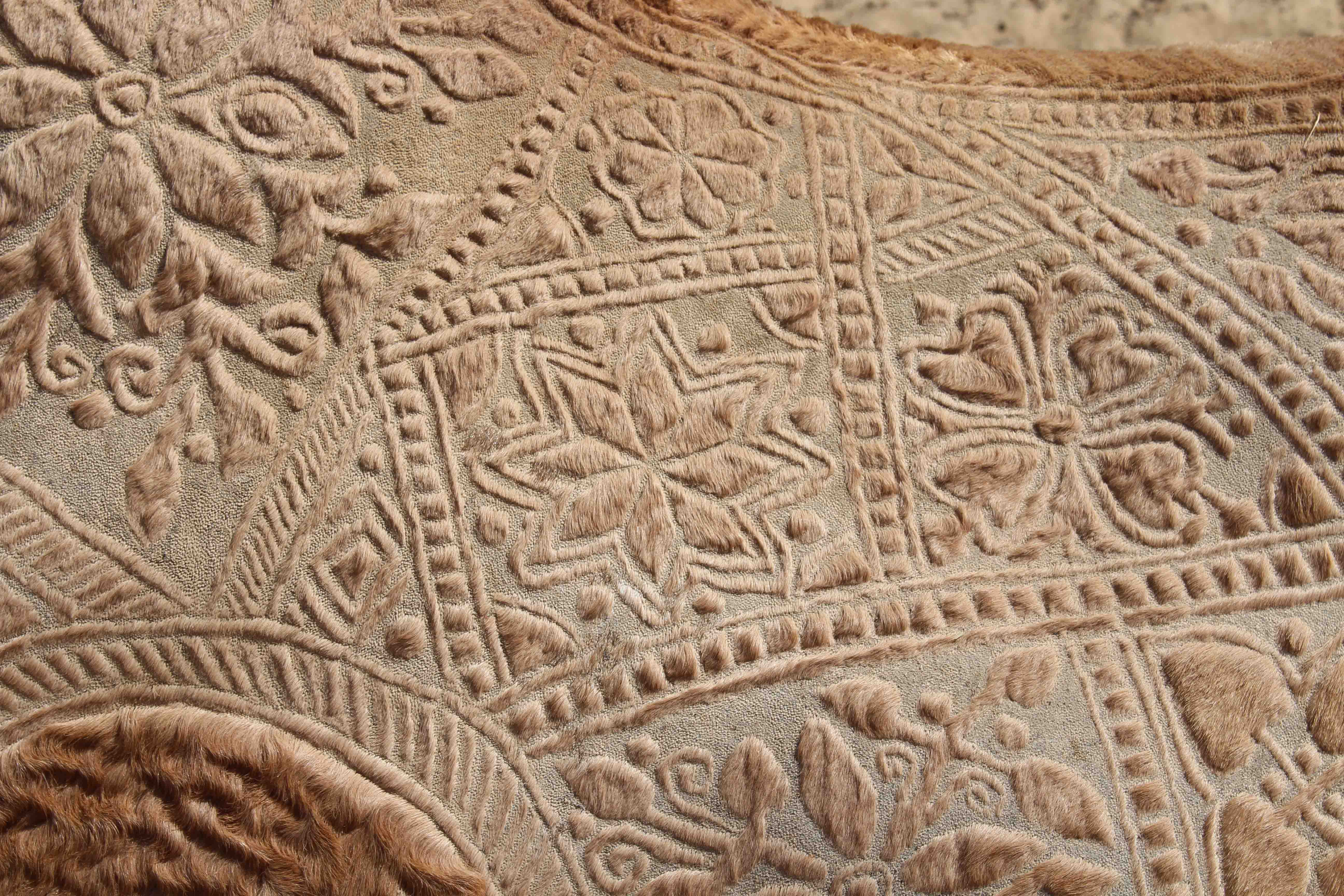
The designs
Among the designs common in Thar, there is Lehar [wave], the Patri [railway track] which are the relatively simpler ones. The most popular design is known as Gulkari [floral], and Kongri, which has multiple designs including flowers, birds, trees, and any other motif. The motifs are often surrounded by waves.
Kongri takes two or three days to complete as it requires care and consistency. The final phase of completing the design is to snip off tiny hair with a small pair of scissors from the entire pattern. This gives a finished, and tidy look to the pattern made.
“Before making the designs, most designers make a circle on the camel’s body with scissors, and the design is made inside the circle,” says Rano Nahrio. “But that is the easier way of making a pattern. I make a square and then proceed with the pattern, because making a square is difficult.”
Since the camel’s knees and chest are difficult areas to work on, henna and hair colour are often used here for decorating instead of shears and scissors. Henna and hair colour is also used on the camel’s neck, cheeks and legs. Nuhrio also likes to design and make ornaments for decorating camels.
An endangered tradition
As there is no fixed price for making designs on camels, it depends on the camel owner and what he wants to pay the designer. For two- or three-day’s work, the cost is between two thousand to three thousand. Since it is not enough for the time and labour that goes into their work, designers are not satisfied with the remuneration, but continue to work for their love of art and camels.
With the increased use of motor cycles and vehicles, the camel use for transport has reduced in Thar. Now, they are only used for cultivation and field work during the rainy season or for carrying loads, and bringing water from wells.
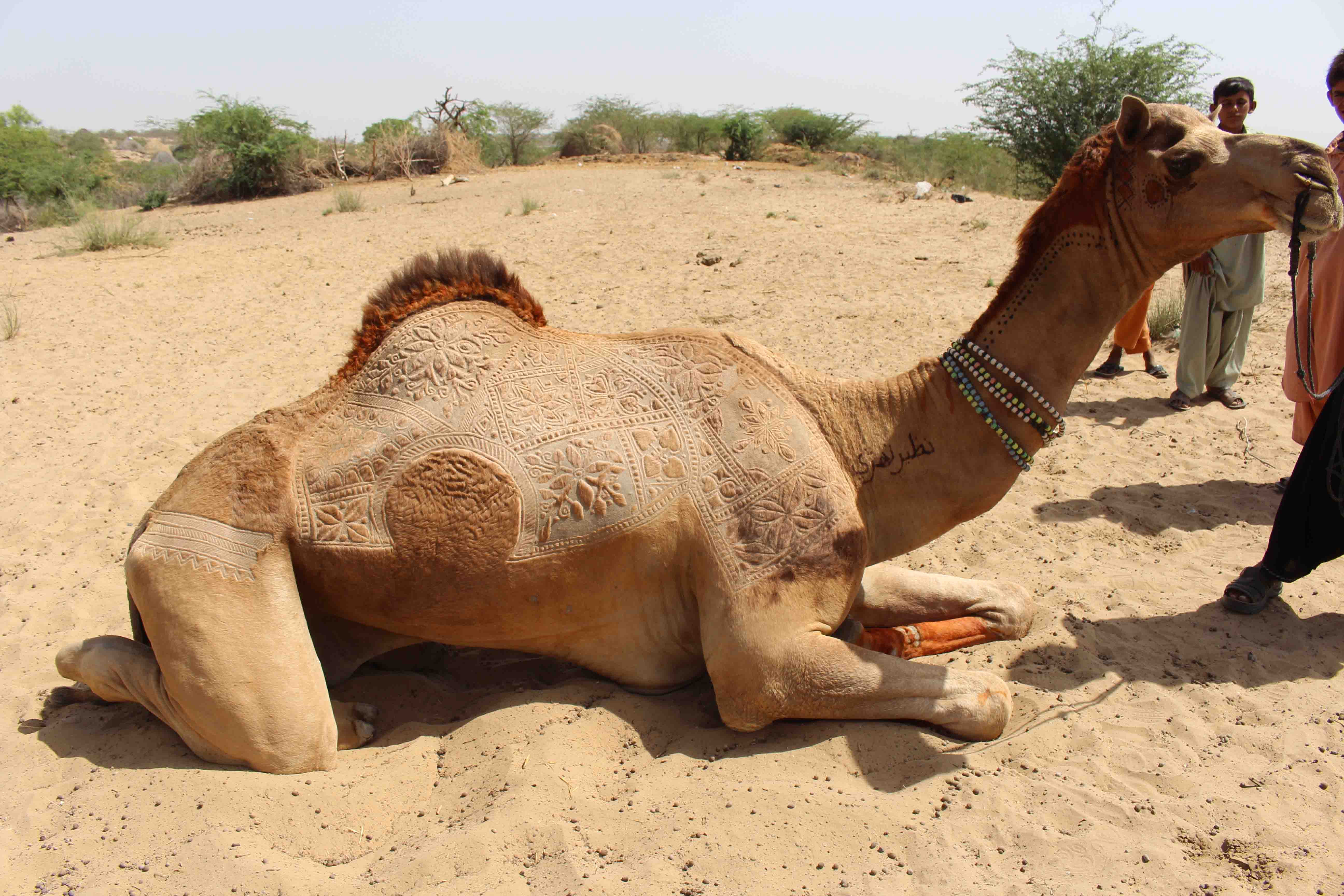
But despite that, camels are still an important part of Thar-village culture and tradition. People love to see camels in wedding ceremonies, shrine and social festivals, and still enjoy camel rides and races. As long as camels are around, this Thari art will flourish, because it cannot work the other way round. Sadly, there is no support, recognition or acknowledgement of the amazing skills of these camel fur artists of Thar, at government or NGO level.
Khalid Kumbhar is a freelance contributor
All facts and information are the sole responsibility of the author
